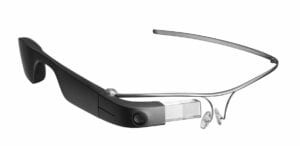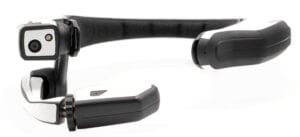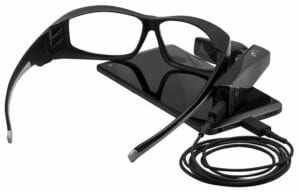Technology is changing and changing medical care with it. With new advancements available, virtual care is providing much-needed access to populations and safety for healthcare workers during COVID-19. But virtual care is important for more than just this moment in time. It can provide a solution to underlying challenges that have been endemic within the system for some time, including provider shortages, access issues for remote and underserved communities, and declining operating margins.
During this pandemic, medical students are struggling to get access to clinical environments for hands-on experience, and global travel restrictions are hampering the ability of medical device manufacturers to train and certify their staff on essential medical equipment. Patients are also bearing the burden during this time, as many are unable to gain access to care. The rapid adoption of telehealth during COVID-19 demonstrates how this technology can be used to overcome barriers to access, allowing students and patients to get the training and care they need. Patients have been turning to telehealth visits so often that it is expected that a massive one billion visits will take place before the end of the year.
Advancing technology and patient care
There is a lot of new tech making these visits possible, but some of the most exciting ones are head-mounted displays and smart glasses. These compact devices are equipped with a small display in front of one or both eyes and several can be worn like standard eyeglasses. Many have see-through displays that seamlessly provide critical information within the user’s vision without limiting the view, sometimes referred to as “mixed reality.” Head-mounted displays and smart glasses both capture information from the environment through cameras, thermal or GPS sensors, microphones, and from internal sources such as connected devices or computers. Wireless technologies, like Wi-Fi, Bluetooth, LTE or 5G, and GPS, support the utilization of a variety of mobile applications and online platforms, making it possible to incorporate specialized applications to adapt the technology to different medical specialties’ needs.

The problem with Google Glass
One of the first smart glasses to cause a stir was Google Glass in 2012. Targeted for wide adoption, this innovative technology did not fare well after its initial release. The marketing strategy for Google Glass, while creating quite a stir in the media, was also one of the major reasons for its downfall. Google Glass was not seeking to solve a problem so much as be the latest and greatest piece of tech. Without a planned, targeted market though, many people just did not see the use in daily life. No clear argument for the technology’s use was ever presented by Google, and a product without any use or understandable value is a product without a market.
The built-in cameras became a cause for privacy concerns. Many were afraid that Google Glass made it possible for the wearer to surreptitiously record their surroundings; others worried that Google would sell the data it was collecting from wearers. Despite the fanfare and attention that Google Glass gained, it just as quickly faded away.

Today’s wearable headsets are purpose-driven
While smart glasses never gained popularity with the general public, they are quickly finding their place in medicine. With the rapidly expanding demand for virtual care, head-mounted displays and smart glasses are finally finding their niche. These devices are adapting to the needs of medical care and providing HIPAA compliant technology solutions.
Head-mounted displays and smart glasses today are focusing on data security and clinical usefulness. Providers can now live stream surgeries and patient visits, enhancing healthcare professional training and continuity of care for patients. Increasingly, physicians and students are using these technologies to collaborate with colleagues outside of their exam or operating room.
One study of medical students and surgical residents explored whether head-mounted displays could improve surgical training. While performing surgery, students wearing head-mounted displays were able to view instructions from a remote specialist, or telementor, as a real-time, 3D overlay directly in their field of view of the patient’s body. The remote mentor used touch-based interactions to create technical annotations that were superimposed on the student’s view of the operative field, giving the students real-time feedback and instruction without distraction. The study showed that students who utilized the head-mounted display were able to perform operations faster, with better technique, and fewer errors.
These hands-free devices use voice commands and speech recognition, enabling physicians to focus on the patient without disrupting the examination or medical procedure. Newer versions also have a less obtrusive appearance, allowing for more natural interactions with patients and adding to providers’ and patients’ willingness to use the devices.
Overcoming barriers to adoption and patient acceptance
As with all new technologies, wearable devices still have some challenges to overcome before they are widely accepted. Privacy is a major concern in medicine, so all platforms must be built in a GDPR and HIPAA compliant manner. The battery life of the device is also important. Taking a break in the middle of surgery to swap out smart glasses is far from ideal and could pose health risks for patients. As with all wearable products, comfort should also be considered. If providers are going to wear these headsets for hours on end, they must be seamlessly integrated and unobtrusive.
System integration is also vital for the adoption of these new wearable devices. To facilitate widespread use, it is essential that these devices be flexible enough to integrate with numerous software and backend systems. Each hospital will have its own unique environment and the technology needs to be able to scale along with user needs. If the software is out-of-date in a matter of years, it is not a good investment for medical institutions and prevents the devices from improving alongside applications.

New options designed with Healthcare in mind
For device adoption to be successful in healthcare, the functionality must enhance clinical effectiveness, improve peer-to-peer collaboration, increase medical knowledge and education, and provide easy and timely access to information – all without interrupting their day-to-day clinical routine and interaction with the patient. Hippo™ Technologies is working to overcome these barriers to acceptance by meeting the needs of providers and care systems.
Hippo’s Virtual Care platform works with hands-free, voice-activated, head-worn tablets to help deliver expert care, optimize safety, and increase efficiency. The plug-and-play design allows for quick deployment and the voice-activated technology was built with busy medical and emergency environments in mind, allowing the device to be accurate even in busy emergency departments. The Hippo Virtual Care platform comes with military grade security features including HIPAA, GDPR, and the most advanced encryption technology, and can also seamlessly integrate with any hospital system or connected device. It is Wi-Fi and Bluetooth enabled and also has 5G capabilities built in.
Designed with the future in mind, Hippo’s platform was built on an open API allowing third-party integration into the system. Additionally, the platform is device agnostic, allowing it to be integrated with other wearables and IoT devices.
Today, wearable devices and platforms such as these are helping healthcare workers to optimize safety, increase productivity, and provide care and training to patients and students around the globe.
Read our White Paper on Head-mounted Displays & Smart Glasses in Healthcare





